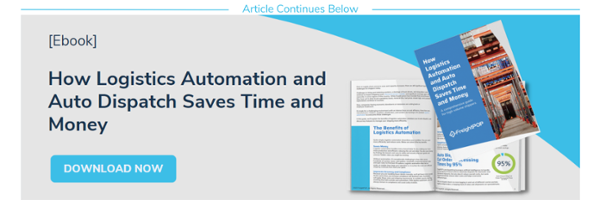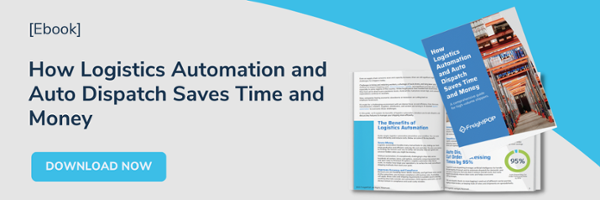Even as supply chain concerns ease and capacity increases, there are still significant logistics challenges for shippers today.
Challenges in hiring and retaining workers, a shortage of truck drivers, and rising labor costs continue to impact shipping costs. Demand remains volatile, and significant coverage gaps remain, especially in some regions of the country. While freight prices have receded from record levels, they have yet to drop to pre-pandemic levels. Amid all this, fuel prices remain high, and customer expectations continue to escalate.
Now, companies fearing economic slowdowns or recessions are cutting back on employee headcount.
It’s made for a challenging environment with an intense focus on cost efficiency. More than ever, manufacturers, retailers, suppliers, distributors, and vendors are turning to AI-assisted logistics automation to overcome these challenges.
In this guide, we’ll explain the benefits of logistics automation, introduce you to auto dispatch, and discuss key features to manage your shipping more efficiently.
Quite simply, logistics automation streamlines your workflow. You can work more efficiently and reduce costs. Below are some of the key benefits.
Saves Money
Logistics automation handles many manual tasks for you, making your team more productive and efficient, reducing the cost and labor. You also save money by finding the lowest-cost way to safely and securely ship your goods and uncover hidden rates you might be missing.
Without automation, it’s exceptionally challenging to shop rates across hundreds of carriers, lanes, and options, constantly comparing contract rates and spot rates to find best-fit options. Logistics automation does that at scale, no matter how large your operation is, to surface the most cost-efficient shipping methods that meet your goals.
Improves Accuracy and Compliance
Because you are handling fewer details manually, you’ll get fewer errors overall. At the same time, you increase compliance with business rules. Automation will apply these rules and shipping requirements to available capacity and flag anything that falls outside your parameters. With logistics automation, you will always remain in compliance and avoid costly mistakes.
Enhanced Customer Experience
By automating shipment tracking, you get full transparency into your entire shipping ecosystem, so you always have the information you need readily available to shipping teams, support teams, and customers.
When customers want to know what’s happening with their shipments, you’ll have real-time data to give them the necessary information.

Increases Flexibility
Another key benefit of logistics automation is increased flexibility. More efficient resource allocations help you optimize workflow and processes. AI automation can handle exceptionally high-volume and automatically respond to seasonal demands or changing customer requirements.
Competitive Advantage
Logistics automation can give you the competitive advantage to improve the speed of order processing, faster response to the changing shipping environment, and leverage cost savings across your organization.
Auto Dispatching: Cut Order Processing Times by 95%
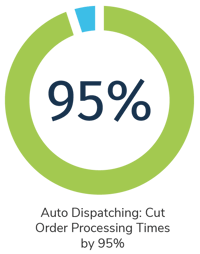 FreightPOP’s auto dispatching leverages artificial intelligence to handle the vast majority of manual work to automate dispatch for domestic and international shipments. Not only does it reduce overall costs, but auto dispatch dramatically reduces labor costs and helps overcome staffing shortages.
FreightPOP’s auto dispatching leverages artificial intelligence to handle the vast majority of manual work to automate dispatch for domestic and international shipments. Not only does it reduce overall costs, but auto dispatch dramatically reduces labor costs and helps overcome staffing shortages.
With auto dispatch, there’s no more logging in and out of different carrier portals, juggling multiple tenders, or keeping track of rates and shipments on spreadsheets.
Reduce Order Processing Time
When it comes to shipping, demand determines supply, capacity, and costs. When demand is volatile, it can strain the system to balance loads and capacity. Minor changes can impact spot rates significantly, and tend rejections can disrupt delivery schedules.
Auto dispatching can save up to five minutes on every shipment. It reduces shipping costs by an average of 30% and it can be done at scale to ensure you meet your shipping requirements and customer expectations.
Hands-free Dispatching
Auto dispatch leverages advanced automation to take orders, convert them into shipments, evaluate rates and carriers, and find the optimal solution — hands-free. You can even automate accessorials.
You can enable the platform to handle orders automatically, trigger the program to run pending orders, and let it work on auto-pilot as orders come in. This avoids the manual process of entering and calculating metrics for dispatch.
Auto dispatch also assists dispatchers in finding the best work order, enabling teams to monitor, schedule, and reschedule loads quickly with just a few clicks.
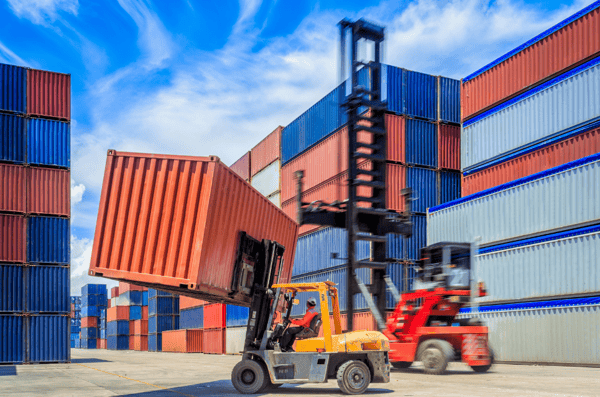
Pre-set Configurations and Business Rules
Pre-set configuration and rules are user-defined and applied against real-time conditions for best rates and routing. You can set a large number of business rules to make sure every shipment meets your requirements.
Uncovers Hidden Savings
Auto dispatching will automatically evaluate all variables in an order and compare them to available options. Often, this can uncover more cost-efficient ways to ship freight that you might otherwise miss. For example, you may ship multiple pallets as LTL, but the AI-enhanced software might find cheaper FTL solutions based on weight and classification.
Works at Scale for High-Volume Shippers
Advanced algorithms can process orders for shipping rapidly and at scale, eliminating the need for tedious manual work and manual rate shopping. Auto Dispatch automatically converts your sales and purchase orders into shipments, and then auto-processes those shipments based on the parameters you set. If you already have carriers selected, orders can be processed without manual intervention for faster execution.
For high-volume shippers, especially, this can save a significant amount of time.
However, you can also rate shop orders to select the lowest rate carrier that meets your standards/preferences on a shipment. You can compare your carrier contract rates, current spot rates, and FreightPOP’s renegotiated rates with vetted carriers to find the best deal.

Supply Chain Transparency
You also get comprehensive supply chain transparency and errors. Because automation processes orders and shipments based on your work rules, every order will meet your specifications. This significantly reduces error rates and delays.
Logistics automation also provides tracking for every order to make sure systems and vendors are in sync across your entire supply chain.
Auto dispatch is the latest advance to make your operation more efficient, but other types of logistics automation can streamline your systems and help you do more with less.
Carrier Rate Shopping
A logistics automation platform should integrate with your order system to scan order numbers. Our transportation logistics management software grabs the essential details and populates a side-by-side rate comparison so that you can see all your shipping options at a glance in one location. You can quickly select the best deal if spot rates drop below your contract rates.
The best logistics automation software will allow you to:
- Compare rates for an unlimited number of shipments
- Email quotes to your team from the app
- Save quotes for later processing
Carrier rate shopping helps you find and secure great spot rates before they expire. Spot rates change fast, so you need a simple way to find and jump on the best market rates. With the right logistic automation platform, you can contact multiple carriers simultaneously and find rates fast.
Pool Consolidation and Distribution
Logistics automation can also help you leverage alternative solutions to save money. For example, freight pooling allows you to combine LTL and parcel shipments to reduce costs.
By consolidating freight with other shipments, you might take advantage of lower rates for FTL, paying for only the portion of the truckload you’re using to get your products to a distribution center. You may also lower your costs by using consolidated pool distribution for last-mile delivery.
Another advantage of pool consolidation and distribution is that you get multiple check-ins on goods in transit, providing you with up-to-date details on shipments in progress.
You’ll need intelligent enterprise logistics tools to manage this, however, as matching loads and finding capacity can be complex. Load optimization tools can help you determine optimum configurations for shipment to maximize load plans.
Smart pooling lets you:
- Optimize multiple (connected) intermediate points
- Access multiple options to ship directly to consolidation centers
- Transport consolidated loads to distribution centers
- Optimize last-mile delivery costs.
The last mile can make up about half of the total costs for shipping goods, so exploring options to reduce the last-mile delivery costs can produce significant savings.
Rate Hacking
Savvy travelers have figured out a way to hack rates for airlines. They search for carriers that have better rates for certain legs of a trip, combine multiple one-way tickets, or find hidden fares to lower overall airfare. Shippers can use the same tactics to uncover hidden savings with automated rate hacking. Combining carriers, adding or changing lanes, and adjusting service levels can provide significant savings.
The best freight rate hacking automation can:
- Compare spot rates against negotiated rates and carriers
- Integrate carrier websites and emails
- Contact multiple carriers simultaneously
- Consolidate carrier responses and bids for a side-by-side review
- Enable real-time acceptance and response to carriers
Logistics automation can scour available options and provide you with multiple options. For example, you can use multiple carriers and legs to reduce costs. While this may add time to your delivery and some additional handling for goods, the savings can add up quickly if your delivery window allows you to deliver a day or two later.
You can also find additional savings with zone skipping. Zone skipping lets you eliminate the charges that carriers apply to cargo that travels over established zones. Depending on the carrier and service type, zone charges can add up fast. Shippers can often find considerable savings by skipping the need to travel through multiple zones and designating freight to arrive within the last mile for bulk shipments.
These rate hacks can create significant cost efficiencies, but managing and balancing all variables requires robust logistics automation.
Freight Audits
Another place where shippers can leverage automation is with freight audits. The right logistics automation platform will have a built-in audit feature. This eliminates the need to handle freight audits manually, rely on spot checks, or use another third-party service to ensure your invoicing and payments are accurate.
Even some large-volume shippers don’t do freight audits at scale because of the time and cost to do it manually or outsource it. Instead, they may just accept rate tolerances within ranges because of the volume of transactions. Yet, this leaves money on the table.

A report in Supply Chain Brain revealed that the number of inaccurate carrier invoices runs between 15% and 66%. In most cases, inaccurate invoices aren’t the result of anything nefarious, but rather human errors such as forgetting to input or update something in invoicing templates. With today’s tight labor market and industry layoffs, though, errors can become even more common.
Inaccuracies between the quoted rates and final invoices often go unnoticed. Other common errors include:
- Duplicate invoices
- Missing discount rates
- Incorrect delivery addresses
- Added accessorial
- Inaccurate dimensions and weight
- Added miles or miscalculated fuel charges
When audits are integrated into your logistics software, you can automate:
- Automate carrier quotes and invoices into a single platform.
- Set custom limits for flagging discrepancies.
- Match POs and invoices
- Check discounts, contracts rate, and tax rates
- Highlight rate errors and accessorial fees
Even for top-quality carriers, it’s not unusual to find discrepancies in shipping and freight invoices of up to 15%. Effective auditing can result in refunds.
Automated freight audits can also help you pick up patterns. For example, if a carrier consistently overcharges or has a high error rate in their invoicing, you’ll be able to see it more quickly and address it with the carrier or switch to another carrier instead.
You can also leverage automation to automate the application of appropriate general ledger and accounting codes to streamline the AP process.
Shipment Tracking
Real-time tracking of all of your shipments and visibility across modes, carriers, destinations, and 3PLs is crucial. When you can automate shipment tracking, it significantly reduces the manual workload. You no longer have to worry about whether your shipments are in progress or stuck somewhere, you’ll get flagged when there are delays, and have the details you need to fulfill customer requests.

With automated shipment tracking, you can track inbound, outbound, and multileg shipments. The best logistic management software will:
- Consolidate all of your tracking information in one place with easy searchability.
- Provide hourly or real-time updates across intermodal and multileg shipments.
- Identify any issues with customs.
- Provide automatic notification to customers.
- Highlight inbound shipments so your team is ready when they arrive.
This all adds up to comprehensive visibility into your entire supply chain.
Reporting and Analytics
Don’t overlook the value of reporting and data analytics in your logistics automation. Data-driven organizations are three times more likely to find and report significant improvements in decision-making compared to competitors. The data in your logistics automation platform will play a key role in uncovering business insights.
Besides finding the best rates for today’s shipment, you also want to analyze historical data to surface trends and apply analytics to forecast future trends and opportunities.
You can leverage this data to find efficiencies and time and cost savings throughout your supply chain by looking at data in four specific ways.
- Descriptive Analytics show you what happened in the past. For example, you can track historical shipping costs against estimated costs and budgets to ensure acceptable ROI.
- Diagnostic Analytics help you understand why something happened in the past. When you see your costs exceeded your estimates or your ROI dropped, diagnostics analytics help you to find out why.
- Predictive Analytics forecast what’s likely to happen in the future. This helps you plan and forecast more efficiently. For example, if you see several months of rising shipping costs, you can re-evaluate your budget to plan for future price increases.
- More high-volume shippers and retailers are also deploying Prescriptive Analytics. Predictive Analytics algorithms run scenarios against data sets to recommend actions to impact future results. This lets you analyze the impact of changing your strategy before deployment.
All of this data can help you better manage your costs and prepare for the future. This can help you negotiate with shippers and understand your decisions' impact. For instance, you might discover specific insights to answer important questions about your shipping practices, such as:
- Are you using the most cost-efficient carrier for certain types of jobs?
- Are you utilizing the right mix of distribution centers?
- Is your team complying with internal criteria?
- Are additional fees being charged compared to past years?
You can apply a data analysis strategy to almost any aspect of your operation, including carriers, suppliers, shipping channels, routes and lanes, shipment types and classifications, and more. Most importantly, you can measure your performance against industry and internal benchmarks to set KPIs for continual improvement.
Knowledge is power. Data analysis can produce substantial results and provide a competitive advantage.
Logistics automation helps you improve productivity and efficiency to manage costs better and protect margins. You can process orders faster with full transparency into your entire supply chain. This enables you to better meet increasing customer demands while maximizing cost savings.
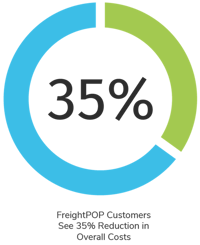
Leveraging logistics automation can help you do more with less. With continued economic uncertainty and a potential recession, technology can help you maintain tighter cost control and streamline operations even with a reduced workforce.
Operating efficiently helps you manage two of your biggest cost centers: shipping rates and time. The average high-volume shipper moving to FreightPOP’s TMS realizes a 20% reduction in shipping costs and a 15%-95% reduction in order and audit processing. Most customers see a 35% reduction in overall costs.



